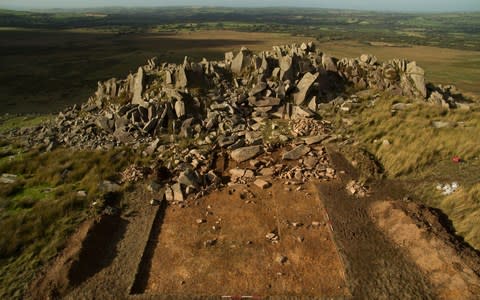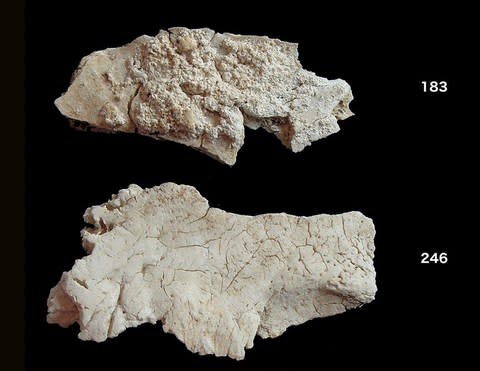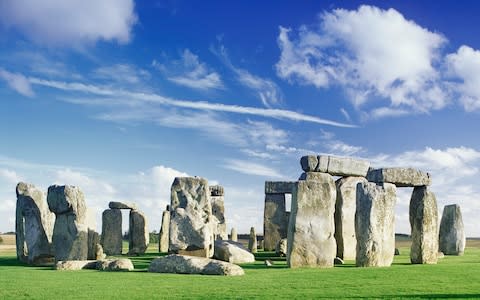Stonehenge builders were Welsh, Oxford University finds

It is perhaps the most English of English monuments.
But a new study by Oxford University and University College London suggests that Stonehenge was actually built by the Welsh.
Although it was known that that the bluestones of the megalithic monument had been sourced from the Preseli Mountains in Wales, it was generally thought the builders travelled there from modern-day Wiltshire to get them.
However isotope analysis of the skulls of people buried at the 5000-year-old Neolithic monument show unmistakable Welsh origins.
Isotopes of elements occur everywhere in the environment, and those that are in the food we eat or the water we drink become incorporated into our tissue and bone.
By looking at the different ratios it is possible to work out where and when a person lived based on their isotope make up.
Professor Mike Parker Pearson, of UCL, who believes that the whole monument may have once stood in Wales, said: “This is a really exciting discovery because it shows how far some of the Stonehenge people travelled.
“But what’s really fascinating is that this date of around 3000 BC coincides with our radiocarbon dates for quarrying at the bluestone outcrops in the Preseli hills of Pembrokeshire.
“Some of the people buried at Stonehenge might have even been involved in moving the stones – a journey of more than 180 miles.”

Little is known about the people buried at Stonehenge and archaeological analysis has largely focussed on what the megalithic monument was used for rather than who built it.
One of the problems is that many of the human remains were cremated, so it was thought isotope analysis would be impossible.
However new developments in archaeological analysis, pioneered by lead author Christophe Snoeck during his doctoral research at Oxford showed cremated bone does still hold crucial information.
Dr Snoeck said: ‘The recent discovery that some biological information survives the high temperatures reached during cremation (up to 1000 degrees Celsius) offered us the exciting possibility to finally study the origin of those buried at Stonehenge.’

With permission from Historic England and English Heritage, the team analysed skulls fragments from 25 individuals which were originally excavated in the 1920s from 56 pits inside Stonehenge, known as ‘Aubrey Holes’, which were named after the seventeenth-century antiquarian John Aubrey who first spotted them.
Analysis of the fragments which dated to around 3000 BC, around the time the monument was built, showed that at least 10 of the 25 people had not spent most of their life near Stonehenge.
Instead, they found the isotope ratios in the remains were consistent with living in western Britain, a region that includes west Wales – the known source of Stonehenge’s bluestones.
John Pouncett, a lead author on the paper and Spatial Technology Officer at Oxford’s School of Archaeology, said: “The powerful combination of stable isotopes and spatial technology gives us a new insight into the communities who built Stonehenge.
“The cremated remains from the enigmatic Aubrey Holes and updated mapping of the biosphere suggest that people from the Preseli Mountains not only supplied the bluestones used to build the stone circle, but moved with the stones and were buried there too.”

The researchers say the results show that complex trade and ritual networks were already well established in Britain as early as 5,000 years ago. It also opens the door to other bones being analysed with were previously thought to be too damaged.
Rick Schulting, a lead author on the research and Associate Professor in Scientific and Prehistoric Archaeology at Oxford, explained: “To me the really remarkable thing about our study is the ability of new developments in archaeological science to extract so much new information from such small and unpromising fragments of burnt bone.
“Our results highlight the importance of revisiting old collections. The cremated remains from Stonehenge were first excavated by Colonel William Hawley in the 1920s, and while they were not put into a museum, Col Hawley did have the foresight to rebury them so that it was possible for Mike Parker Pearson and his team to re-excavate them, allowing various analytical methods to be applied.”
The research was published in the journal Nature Scientific Reports.

